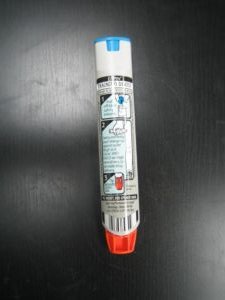An allergy to beef is estimated to affect some children including those who are allergic to cow’s milk. Many children are able to outgrow their allergies within three years. The adult-onset beef allergy might be a permanent condition that can last for a lifetime. If the individual develops hives or breathing issues several hours after consuming beef or foods that contains beef, an allergy might be the culprit.
Allergens in beef
Just like all types of meat, beef is a high-protein food, but not 100% protein. It is important to note that beef contains the carbohydrate galactose-alpha-1,3 galactose which is commonly called as alpha-gal.
In a study conducted, some individuals experience delayed allergic reactions to alpha-gal from beef as well as other mammal-based meats. The individuals experienced hives or respiratory distress within 3-6 hours after consuming beef, pork or lamb. It simply means that allergic reactions to alpha-gal antibodies can be lethal.

Hives
Hives or urticaria is a common allergic response after eating beef. Itchiness of the skin as a response to histamine present in the body that was released during an allergic reaction is the initial sign of the condition. Hives are described as red-colored, clearly defined welts. They often spread into large-sized, inflamed areas. This skin condition eventually subsides on their own, oftentimes for hours only to reappear. In most cases, antihistamines are given to effectively control hives.
Angioedema
Angioedema produces sub-surface skin swelling. It is important to note that this allergic reaction to beef occurs most often on the face, particularly in the lip and eye area. It also manifests as spreading or linear inflammation on the hands, throat and feet.
The inflamed welts cause sore pressure often without itchiness. The symptoms that accompany that condition include respiratory distress, abdominal issues, swelling or chemosis of the interior eyelid. Take note that chemosis makes closure of the eye impossible.
The treatment for angioedema includes antihistamines, cortisone-based anti-inflammatory medications as well as acid reflux medications. The application of a cool compress over the affected areas can help reduce the discomfort caused by angioedema and chemosis. As for respiratory difficulty, it requires immediate medical treatment.
Anaphylaxis
Always bear in mind that anaphylaxis is a life-threatening reaction to beef. Unlike with angioedema or hives, anaphylaxis involves all the bodily systems and develops right after exposure to the beef allergen.
The histamine floods various types of tissues, thus disrupting the airways. This reaction can also trigger abdominal cramps, fainting, dizziness, coughing, anxiety or irregular breath sounds. Anaphylaxis requires immediate medical care.
Once an individual is positive for beef allergy, the doctor might prescribe an injectable epinephrine as an emergency treatment for anaphylaxis. In addition, the individual should always bring along a medical ID bracelet as well as a supply of chewable diphenhydramine tablets.
